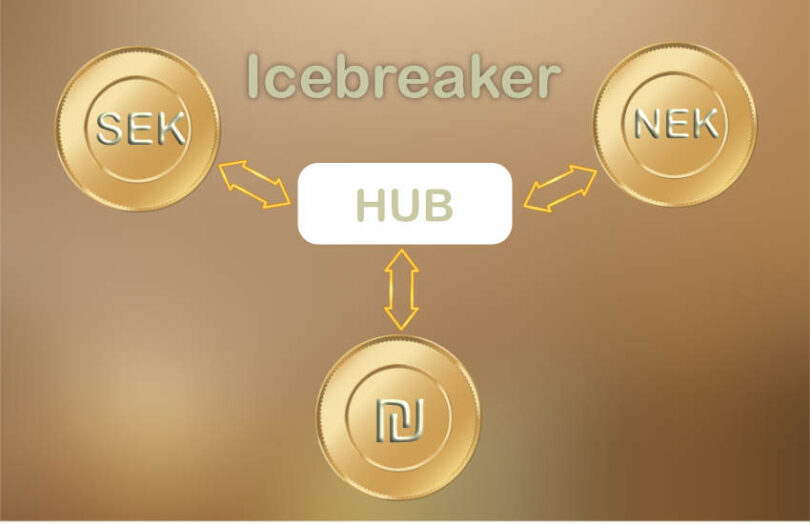Today the central banks of Israel, Norway and Sweden and the BIS Innovation Hub shared the results of Project Icebreaker, a cross border central bank digital currency (CDBC) research project.
There have been several cross border CBDC initiatives, but to date, they have all focused on using interbank or wholesale CBDC. Project Icebreaker is the first to explore connecting retail CBDCs in a hub and spoke model as a cross border CBDC application.
The domestic CBDC does not travel across borders. Instead, the payment goes to a foreign exchange (FX) provider who exchanges the domestic CBDC for a foreign CBDC. Unlike current payment systems where the payment provider is usually also the FX provider, in Icebreaker there’s price competition between FX providers which addresses one of the biggest cost issues with cross border payments.
For the FX, an intermediate currency can be used if there’s insufficient competition for a particular FX pair.
Icebreaker’s platform is designed as a hub and spoke model, with the central hub purely operating as a message exchange, not dissimilar to SWIFT.
All three CBDCs used distributed ledger technology (DLT), with Israel and Norway using private Ethereum-based ledgers (Quorum and Besu) and Sweden using Corda’s enterprise blockchain.
“When exploring CBDCs it is important to include cross currency opportunities from the start,” said Aino Bunge, Deputy Governor, Sveriges Riksbank. “Project Icebreaker is an interesting project that shows how different CBDC solutions in different countries could enable instant cross currency transactions in a way that would greatly benefit the end users.”
Despite needing to consider cross border issues at the beginning, the project found that the CBDCs could be very different, with a bare minimum of commonality. This includes conditional Hash Time Locked Contracts (HTLC) for interoperability and instant settlement and a CBDC that operates 24/7/365. Additionally, there needs to be several FX providers.
“If Israel is to issue a digital shekel, it would be very important that we do it according to the evolving global standards, so that Israelis could use it also for efficient and accessible cross border payments,” said Andrew Abir, Deputy Governor, Bank of Israel. “While there is still much work ahead of us for the Icebreaker model to become a global standard, the learnings from this successful project have been very important for us and for the central banking community.”
The project assumed that wallet providers would deal with anti money laundering (AML) processes. AML is one of the biggest frictions in cross border payments. “A wallet provider in one country may not know the origin of the funds sent by the payer in another country in a chain of cross-border payments,” the paper says. It suggests the hub owner might want to explore new technologies to address the friction.
Meanwhile, in Asia project MBridge, a wholesale cross border CBDC, is advancing towards production as a joint initiative between the BIS and the central banks of China, Hong Kong, Thailand and the UAE.






